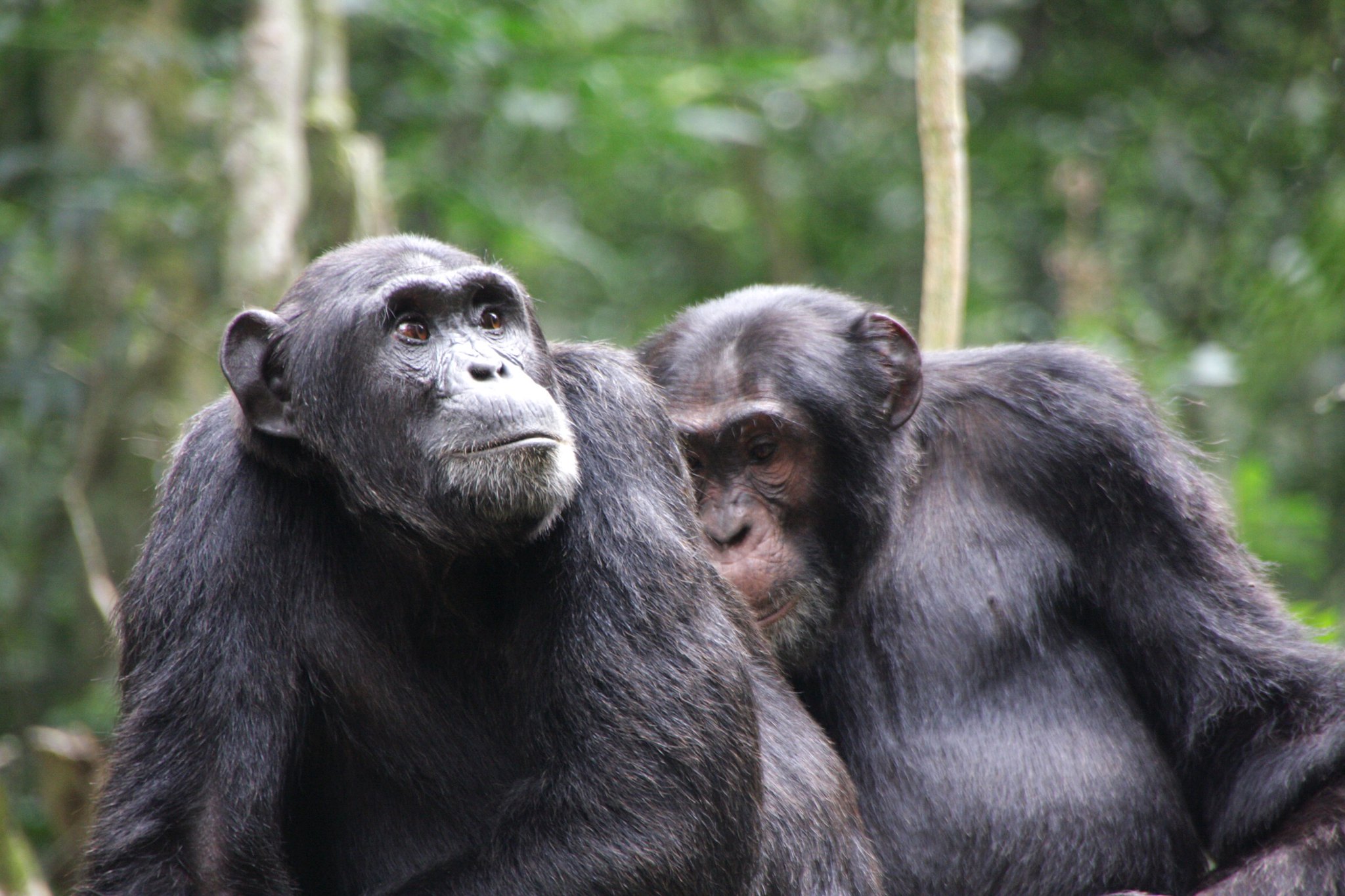Kibale Forest National Park
Situated east of the Rwenzori Mountains, Kibale Forest National Park is renowned for its breathtaking scenery, which includes volcanic crater lakes, expansive tea fields, and rich tropical rainforests. Spanning roughly 795 square kilometers, it represents the largest continuous forested area in the region. Initially designated as a forest reserve in the 1940s, its status was elevated to a national park due to its extraordinary ecological diversity. The park harbors more than 350 tree species, 71 mammal species, and around 370 types of birds.
Kibale is particularly celebrated for its primate population. It supports the largest number of chimpanzees in Uganda, with approximately 1,450 individuals. Additionally, rare species like the red colobus and L’Hoest’s monkeys can be found here. Although animals such as elephants, buffaloes, and giant forest hogs also inhabit the park, they are more elusive.
Birdwatchers will find Kibale especially rewarding. It hosts six bird species that are exclusive to the Albertine Rift, including the black-capped and collared apalis, blue-headed and purple-breasted sunbirds, dusky crimsonwing, and red-faced woodland warbler. Other notable species include the African pitta, green-breasted pitta, black bee-eater, eastern nicator, yellow-rumped tinkerbird, Kibale ground thrush, brown-breasted alethe, blue-breasted kingfisher, Abyssinian ground-thrush, and the majestic crowned eagle.
Tourists primarily visit two areas within the park. Kanyanchu, the main visitor center, lies 35 kilometers southeast of Fort Portal along a newly surfaced road toward Kamwenge and Ibanda. The second site, Sebitoli, is situated 16 kilometers east of Fort Portal on the route to Kampala.
Activities & Attractions in Kibale Forest National Park
PRIMATE WALK (CHIMPANZEE TRACKING)

A highlight for many visitors to Kibale is the Primate Walk, which offers the unique opportunity to see chimpanzees in their natural environment. At Kanyanchu, some chimpanzee groups have been habituated to human presence for more than 25 years, making them more comfortable around people. As a result, there’s a high likelihood—over 90%—of encountering them during the trek.
CHIMPANZEE HABITUATION EXPERIENCE (CHEX):
For visitors seeking a more immersive and adventurous encounter, the Chimpanzee Habituation Experience provides a rare opportunity to accompany researchers and park rangers as they gradually acclimate wild chimpanzees to human presence. Unlike the fully habituated groups, these chimpanzees are less familiar with people, which makes the experience more unpredictable and thrilling.
NATURE WALKS:
Kibale National Park’s Nature Walk provides a peaceful and flexible way to explore one of East Africa’s most diverse and picturesque forests. Unlike the Primate Walk, this activity isn’t centered around spotting chimpanzees or ticking off wildlife sightings, making it especially suitable for families with young children or anyone preferring a slower-paced adventure.
NIGHT WALKS:
For a unique and thrilling experience, visitors can take part in a Night Walk through the forest. As darkness falls, Kibale transforms, revealing a hidden world of nocturnal animals such as bushbabies, pottos, and galagos. Exploring the forest by flashlight adds an element of mystery and excitement, making this walk a memorable adventure.
BIRDING:
Kibale is a top destination for bird enthusiasts, boasting 372 bird species across its forests, grasslands, and wetlands. Guided birding walks, led by experienced Uganda Wildlife Authority (UWA) guides, take place along the trails at Kanyanchu and Sebitoli. Just 5 kilometers south of Kanyanchu, the Bigodi Wetland Sanctuary—managed by the local community—offers birders the chance to spot even more species that thrive in swampy areas and along the forest edge.
Getting to Kibale Forest National Park
BY ROAD
The main tourism hub at Kanyanchu, on the newly tarmacked Fort Portal-Ibanda road, can be reached from Kampala by a number of routes, all on surfaced roads. The most direct (335km) is via Fort Portal, 35km to the north. The park can also be reached from the south via Lyantonde and Ibanda (392km), Mbarara and Ibanda (405km) and Mbarara, Kasese and Fort Portal (525km).
THROUGH AIR
Kibale National Park has access to two airstrips: Nyakisharara, near Mbarara (100km on tarmac) and Kasese (60km on surfaced and dirt roads).
Why Visit Kibale
Kibale Forest is famed for its high concentration of chimpanzees as well as being the primate capital of the world, offering a prime opportunity for primate enthusiasts. Chimpanzee trekking allows for close encounters with these intelligent animals which are our closest relatives in their natural habitat. The park also supports other primates like black and white colobus monkeys, blue monkeys and a variety of bird species.
